Here on our little red dot, we celebrate various festivals all year round, and commemorate Racial Harmony Day on 21 July annually. On this day, parents send their little ones off to school in traditional garb, adding colour to the festivities. But do you know why we celebrate Racial Harmony Day on 21 July? This date is significant because the 1964 Race Riots took place on 21 July. Racial Harmony Day serves as a reminder to never take the peace and harmony in multiracial Singapore for granted.
Speaking of multiracial, how much do your kids know about the festivals celebrated by the different races living in Singapore? Do they know that the Hungry Ghost Festival is a Taoist festival? Or that Holi is an Indian festival of colours that ushers in Spring? Wait, did you even know that? If the answer is “no”, it’s time to learn about them! Here are 11 festivals everyone living in multiracial Singapore should know about.
1. Chinese New Year (January/February)
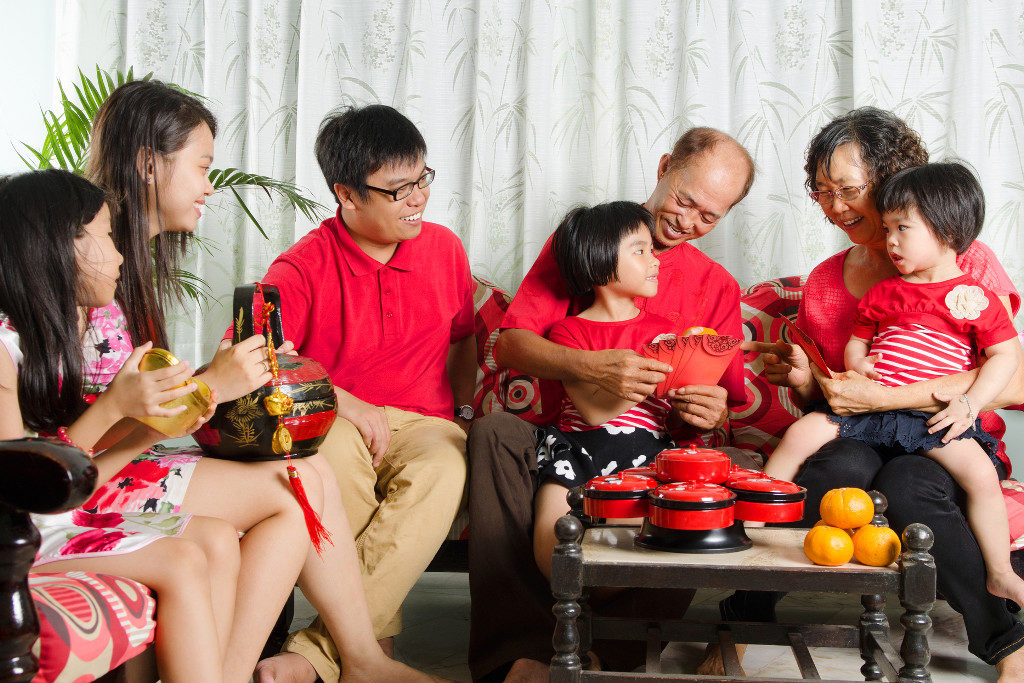
Did you know that Chinese New Year is one of the world’s most celebrated festivals, with the biggest annual mass human migration? In countries with a significant Chinese population, this is a major holiday. On the eve of Chinese New Year, families to gather for their annual reunion dinner. This is a big event, and people will travel from far and wide to return home for it.
Before this, Chinese thoroughly clean their homes to ‘sweep’ away ill fortune and welcome incoming prosperity. Decorations in predominantly red hues (the colour symbolising good luck) adorn interiors and exteriors of homes. Kids look forward to receiving red packets (“hong bro”) filled with money, from their elders. It is also customary for visitors to present their hosts with a pair of mandarin oranges. These symbolise abundance and good fortune.
(See also: 7 Online Stores to Get Traditional Chinese New Year Outfits for Your Child)
2. Pongal (January)
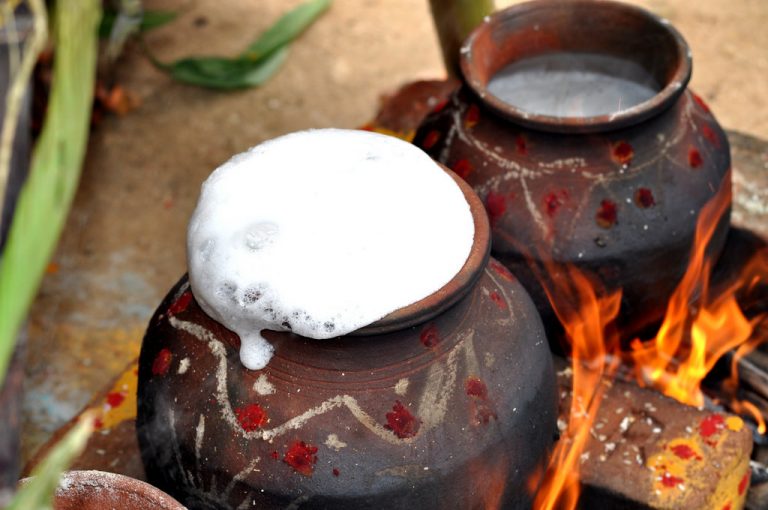
Pongal is a harvest festival celebrated mostly in South India over four days. It falls on the first day of the auspicious month of Tai. Here in Singapore, Hindu families observe Pongal by visiting the temple, offering prayers, and whipping up delicious vegetarian fare served on banana leaves. On the eve of Pongal, known as bhogi, Hindus discard old, unwanted belongings to signify a fresh start.
On Pongal day, they cook a pot of rice with milk to offer at dawn to the Sun God. The word pongal means to overflow. So this pot of rice with milk has to be boiled until it bubbles over, to symbolise prosperity and abundance. The cooked rice is later served to everyone in the family as well as visitors to the home.
The second day of Pongal is set aside to honour cattle. The Hindus consider cows to be sacred. Hence on this day, they scrub the cows clean, and paint their horns beautifully. This is to show how they appreciate the work that cattle do, such as ploughing the fields and providing milk. In addition, beads, bells and flower garlands are placed around the cows’ necks. The cows even get special snacks as a treat!
3. Thaipusam (January/February)
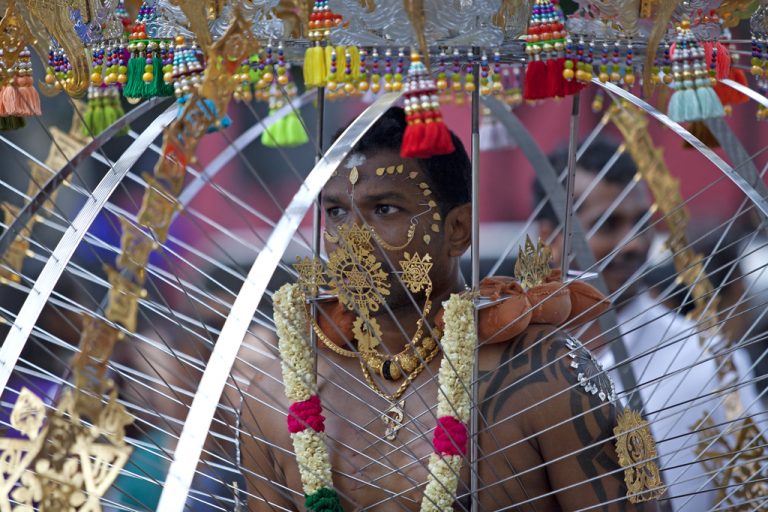
Hindus celebrate Thaipusam in honour of Lord Murugan, who represents virtue, youth and power. He is also the destroyer of evil. The Thaipusam ceremony starts in the wee hours of the morning. The first batch of devotees carry milk pots and wooden kavadis. Some pierce their tongues with skewers and carry a wooden kavadi decorated with flowers and peacock feathers balanced on their shoulders. Some others carry spiked kavadis.
For these devotees, Thaipusam signals the end of a month spent in spiritual preparation with a strict vegetarian diet. They believe that this sacred task can only be fulfilled without pain when the mind is free of material wants, and the body is free from physical pleasures. Devotees walk 4.5 kilometres from Sri Thendayuthapani Temple at Tank Road to Sri Srinivasa Perumal Temple at Serangoon Road. They are accompanied by relatives and friends who chant hymns and prayers to encourage them. You can watch the colourful procession anywhere between these roads!
4. Holi (March)
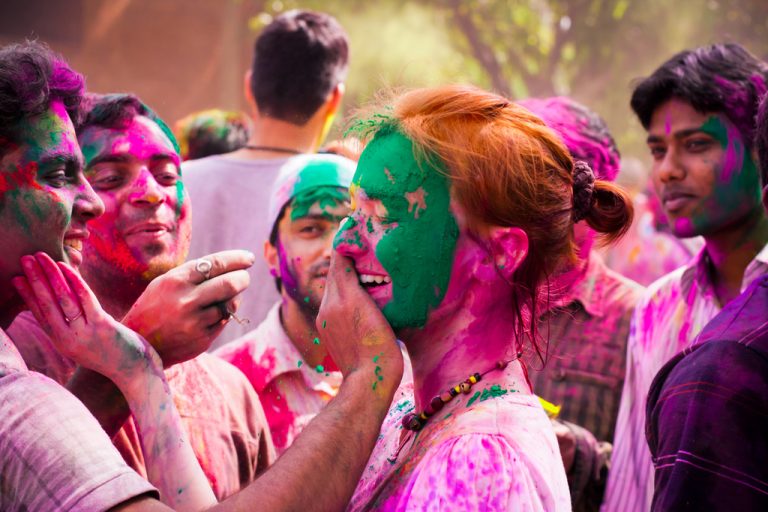
The traditional Hindu festival of Holi celebrates the beginning of Spring as well as the triumph of good over evil. Have you seen pictures of people covered in the coloured powder that revellers throw at each other? Although Holi is a religious festival that originated in India, people in many countries around the world — Singapore included — celebrate it.
The coloured powder symbolises the coming of Spring and all the new colours that manifest themselves in Nature. The four main colours of powder represent different aspects of the festival. Red reflects love and fertility, blue is the colour of Lord Krishna, and green symbolises new beginnings!
5. Hari Raya Puasa (April/May)
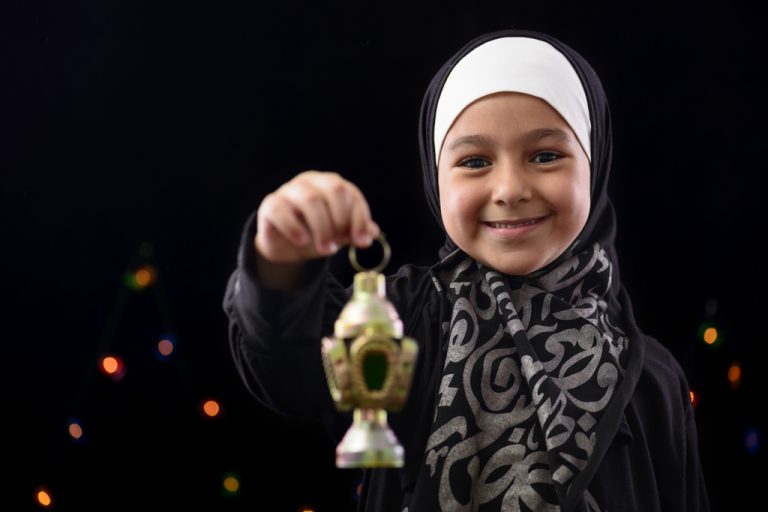
The festival of Eid, better known here as Hari Raya Puasa, marks the end of the Islamic holy month of Ramadan. Ramadan is a period of sober repentance for Muslims, who fast from dawn to dusk for approximately 30 days. During Ramadan, Muslims also devote much of the month to worship, charitable deeds and acts of compassion.
The day starts with a visit to the mosque. Here, Muslims recite special prayers for the occasion. Then it’s off to visit relatives! Muslims traditionally ask for forgiveness from their elders for any wrongs committed during the year. Many Malay families in Singapore don new outfits in the exact same shade. Men wear loose shirts with trousers (baju melayu) while ladies don loose-fitting full length blouse and skirt combinations (baju kurung).
Popular festive dishes include beef rendang (spicy beef stew), sayur lodeh (vegetables cooked in coconut milk gravy) and fluffy white rice in the form of ketupat. What about desserts, you ask? Everyone loves the kueh, the ondeh-ondeh (chewy balls with palm sugar centres), and the putu piring (steamed rice cakes with grated coconut)!
6. Vesak Day (May)
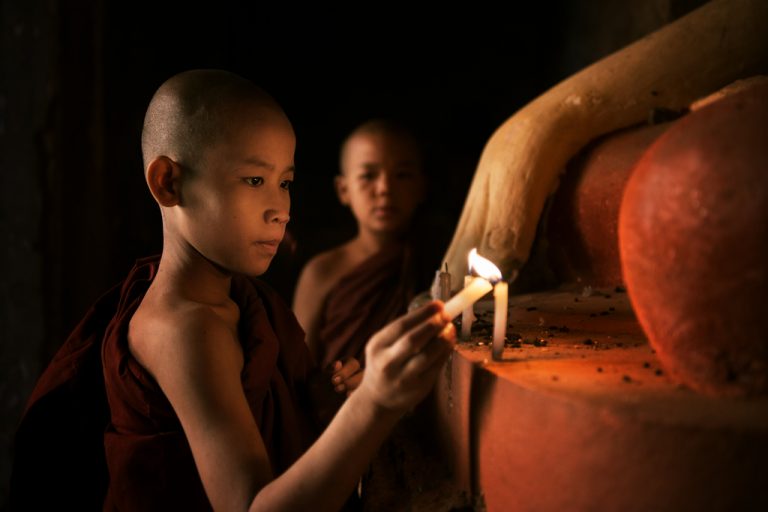
Vesak Day festivities start at the crack of dawn as Buddhists flock to temples for a special prayer ceremony. After they hoist the Buddhist flag, they chant hymns in praise of Buddha, the Dharma (his teachings) and the Sangha (his disciples). Buddhists also bring offerings of candles, joss sticks and flowers to the temples. The candles and joss sticks burn down while the flowers eventually wither. This reminds Buddhists that life is fleeting, and that all things will come to an end.
For the rest of the day, Buddhists will do worthy deeds. Devotees believe that performing good deeds on this day will multiply merit many times over. The Buddhists will also eat only vegetarian meals on this day.
7. Dragon Boat Festival (May/June)
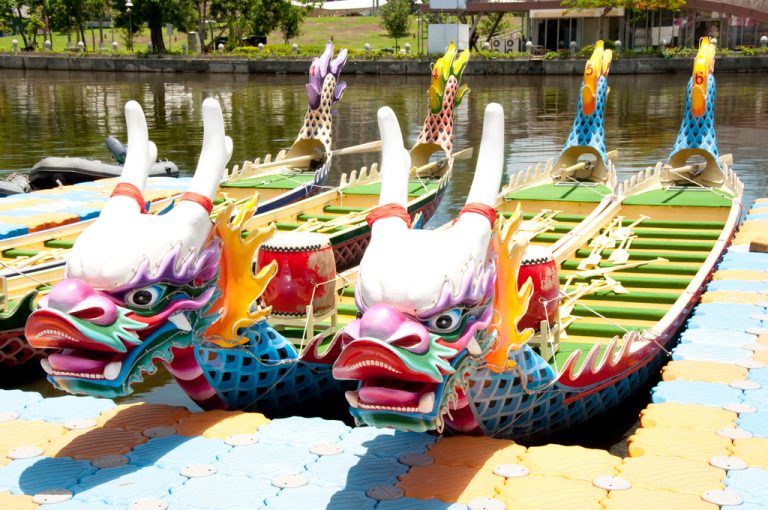
Here’s one of the most enduring legends associated with the Dragon Boat Festival. Qu Yuan, a trusted minister of state during the Warring States era of China, was banished by his emperor due to political reasons. In despair, he threw himself into the river and ended his life. As he the common folk loved him, fishermen beat their oars against the water to stop the fish from devouring his body. Others threw cooked rice wrapped in leaves into the water, hoping the fish would eat them instead.
This resulted in today’s dragon boat races and dumplings — two of the most distinctive aspects of the festival today. The glutinous rice dumplings are triangular, wrapped in pandan leaves and have a wide variety of fillings. In Singapore, dragon boat races take place at the Kallang River to usher in the Dragon Boat Festival.
8. Hari Raya Haji (June/July)
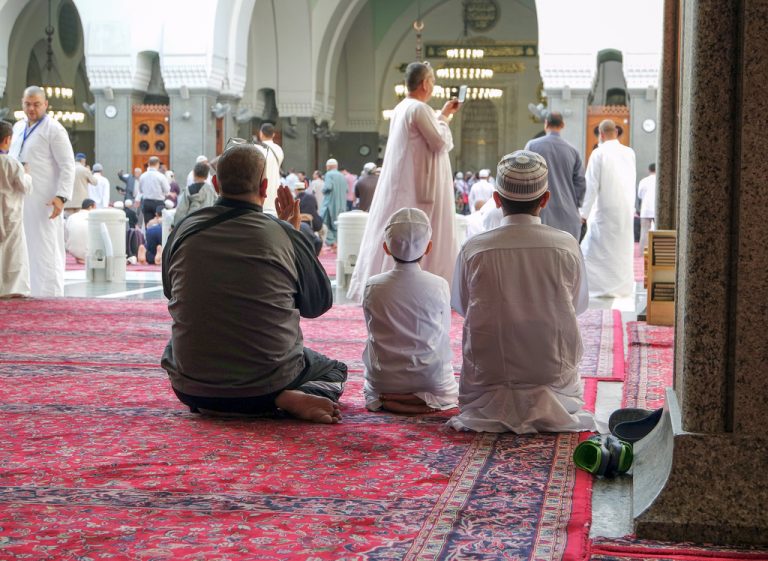
Hari Raya Haji, which lasts four days, commemorates Prophet Ibrahim’s complete faith and trust in God. This is recounted in the story of God commanding Ibrahim to sacrifice his son Ismail, a commandment that Ibrahim obeyed. God stopped him and provided him with a sheep to sacrifice in place of his son. The most important ritual observed here is that of korban (sacrifice). Worshippers contribute live sheep, lambs, goats and cows, which are slaughtered as prayers are recited.
This act reminds worshippers of Prophet Ibrahim’s willingness to offer his own flesh and blood to God without hesitation. The meat of the animals is then cleaned, carved, and distributed to the poor and needy. Following a visit to the mosque, Muslims pay visits to family and friends.
9. Hungry Ghost Festival (August/September)
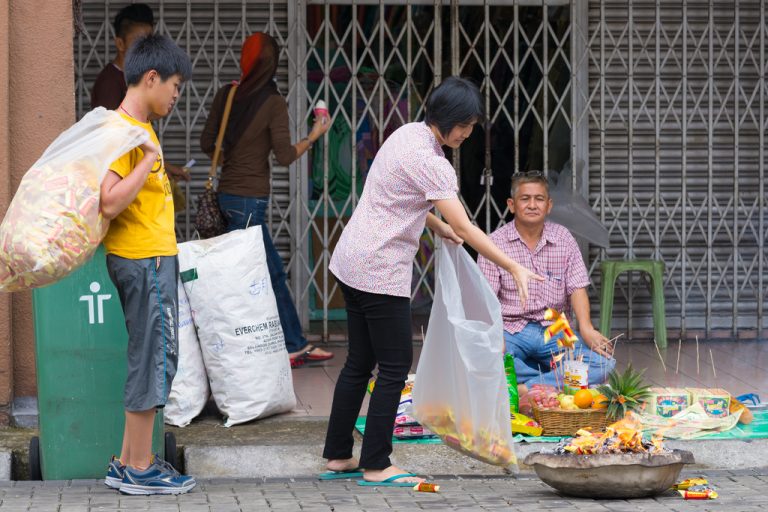
The Westerners have Halloween. The Chinese have the Hungry Ghost Festival — when they believe the souls of the dead roam the Earth. According to custom, these spirits get up to no good if ignored. Hence believers make offerings to appease them during this period, the seventh month of the Chinese lunar calendar.
People burn offerings in the metal bins scattered around residential areas. These include hell money and other paper offerings (cars, watches, jewellery etc.). During this period, do watch your step while walking around. Try not to trod on the ashes, or on other offerings such as food and fruit.
The ghosts are not just hungry for food and money though. They also need entertainment! This happens under large tents in the heartlands, where there are dinners and auctions. There are also Chinese opera and song and dance getai performances. Don’t be surprised if you notice that no one is sitting in the front row. These prime seats are reserved for the unseen audience!
10. Mid-Autumn Festival (September/October)

The mid-autumn festival marks the end of the autumn harvest. Traditionally it was a time to give thanks to the gods. It is also a time of the year that the moon is at its brightest, hence the lunar legends that are associated with the celebration. The tale goes that Chang Er, the wife of a merciless king, drank an elixir of immortality and ascended to the moon.
Kids love the mid-autumn festival because they get to play with pretty lanterns! There are simple paper lanterns as well as elaborate cellophane and wire structures. These days, plastic battery-operated, music-playing ones are common.
The Mid-Autumn festival is not complete without mooncakes! Legend has it that mooncakes helped to free Yuan Dynasty China from the rule of the Mongolians. Rebels organised an upheaval by passing messages hidden in mooncakes. Today, you won’t find messages in your mooncakes. Instead, you can feast on countless varieties of the delicacy, from the traditional lotus seed paste ones, to snowskin versions packed with exotic fillings.
11. Deepavali (October/November)
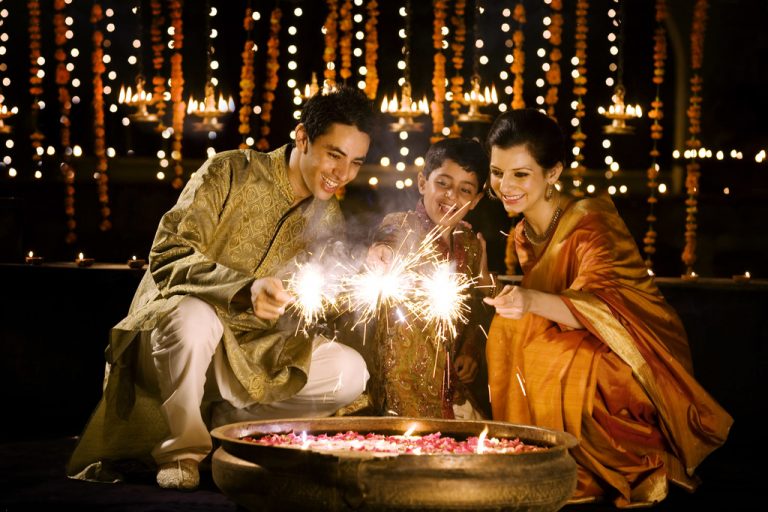
Contrary to popular belief, Deepavali is not a new year celebration. It is actually a festival which spiritually signifies the victory of light over darkness, good over evil, knowledge over ignorance, and hope over despair. Although the mythical tales related to Deepavali vary with each region in India, they all eventually point to joy and spiritual enlightenment. This is why Hindus light up oil lamps to place outside their homes on the night of Deepavali – light symbolises the triumph of good over evil.
What else do Hindu families do to usher in the festival of lights? During the days leading up to Deepavali, they will thoroughly clean and decorate their homes. On the morning of the festival, Hindus dress up in new traditional outfits and children receive blessings and money packets from their parents. Some families choose to start their day by visiting the temple while others head out to visit their relatives.
Which Festivals do You Celebrate?
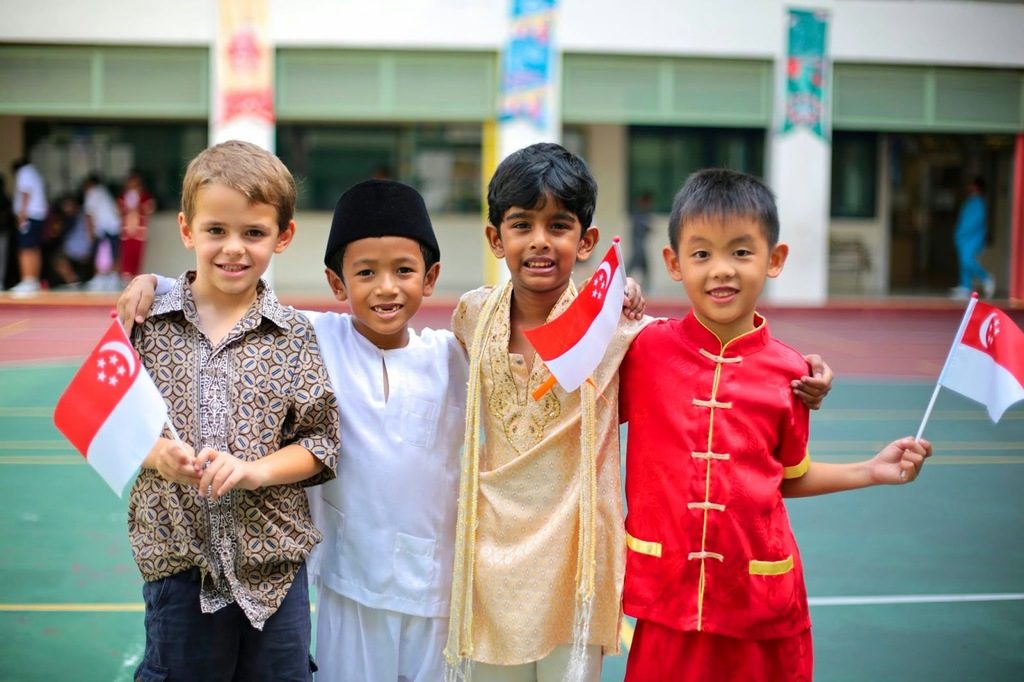
With so many festivals to celebrate throughout the year, we enjoy not just the colour and the ceremony, but also the public holidays that come with them. As we celebrate though, let’s try not to lose sight of the meaning behind these festivals.
The post 11 Your Kids Need to Know! appeared first on TinySG.
from TinySG https://tinysg.com/11-your-kids-need-to-know/?utm_source=rss&utm_medium=rss&utm_campaign=11-your-kids-need-to-know

No comments:
Post a Comment